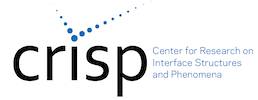Our kits are currently being reviewed and updated by a team of collaborative, innovative and interdisciplinary educators who wish to enhance the educational opportunities for students. These dedicated teachers are members of CRISP Collaborative Science for All (CCSA) as well as local educators.
Click to see the SCSU CRISP Module Template used by CCSA for improving and updating the CRISP demos and kits. Each kit page offers a CRISP developed teacher module and CRISP aligned standards (both NGSS and CCSS)
Kit Request form

Cold—for centuries we’ve fought it, shunned it, and huddled against it. Cold might seem to be an enemy of life, but it may now hold the key to a new generation of science and technology that will improve —or even save—our lives.
Adapted from Making More Stuff: Colder by NOVA via the Making More Stuff project
Subject(s):
Temperature, Engineering, Mechanics
Objectives:
Students create hand-powered fans out of paper, then experiment with different materials and designs to maximize their fans’ effectiveness.
Materials in this kit:
Making Stuff DVD
The materials provided for this activity include:
- Pencil and paper
- Cardboard pieces
- Paint stirrers (or craft sticks)
- Ruler
- Scissors
- Glue gun (or tape)
Materials for the Design challenge include (for groups):
- Pencil and paper
- Plastic food-storage container
- Small computer fan (80 mm)
- 9-volt battery with connector
- Indoor/outdoor thermometer
- Box cutter
- Ruler
- Hot glue gun
Not provided:
- Various insulation materials (foam, newspaper, bubble wrap, tin foil, etc.)
- Ice
Suggestions for the Teacher:
Things to talk about:
What does “cold” mean to you?
Can you name things that you might encounter in your daily life that are cold?
How do we make stuff colder?
What about our lives might be different if we couldn’t make stuff colder?
Can you name some tools or equipment that people have designed to make stuff colder?
Safety:
Use caution when cutting materials for the second activity
Additional Resources:
Making Stuff Colder Teacher Module
Making Stuff Colder CRISP aligned standards
Making Stuff Colder Guide from NOVA
Making More Stuff Website
NOVA
Real World Applications:
Cold—for centuries we’ve fought it, shunned it, and huddled against it. Cold might seem to be an enemy of life, but it may now hold the key to a new generation of science and technology that will improve —or even save—our lives:
Storage of food
Storage of Medicines
Clothing
Electronics
Air conditioning
Freezers
STEM Careers:
Structural Engineer
Civil Engineer
Mechanical Engineer
Physicist
Materials Scientist
Mechanical Engineering Technologists
Marine Engineers and Naval Architects
Industrial Engineer
Health and Safety Engineers
Engineering Managers
Standards:
MS-PS3-2 Energy
- Develop a model to describe that when the arrangement of objects interacting at a distance changes, different amounts of potential energy are stored in the system.
MS-ETS1-1 Engineering Design
- Define the criteria and constraints of a design problem with sufficient precision to ensure a successful solution, taking into account relevant scientific principles and potential impacts on people and the natural environment that may limit possible solutions.
PS3.A: Definitions of Energy
- A system of objects may also contain stored (potential) energy, depending on their relative positions.
PS3.C: Relationship Between Energy and Forces
- When two objects interact, each one exerts a force on the other that can cause energy to be transferred to or from the object.
MS - ETS1.A: Defining and Delimiting Engineering Problems
- The more precisely a design task’s criteria and constraints can be defined, the more likely it is that the designed solution will be successful. Specification of constraints includes consideration of scientific principles and other relevant knowledge that are likely to limit possible solutions.
MS - ETS1.B: Developing Possible Solutions
- Analyze data from tests to determine similarities and differences among several design solutions to identify the best characteristics of each that can be combined into a new solution to better meet the criteria for success.
- Develop a model to generate data for iterative testing and modification of a proposed object, tool, or process such that an optimal design can be achieved.
Systems and System Models
- Models can be used to represent systems and their interactions – such as inputs, processes, and outputs – and energy and matter flows within systems.
Interdependence of Science, Engineering, and Technology
- All human activity draws on natural resources and has both short and long-term consequences, positive as well as negative, for the health of people and the natural environment. (MS)
- The uses of technologies and limitations on their use are driven by individual or societal needs, desires, and values; by the findings of scientific research; and by differences in such factors as climate, natural resources, and economic conditions. (MS)
- New technologies can have deep impacts on society and the environment, including some that were not anticipated. Analysis of costs and benefits is a critical aspect of decisions about technology. (HS)
SEP 2 – Developing and Using Models
- Develop a model to describe unobservable mechanisms.
MS SEP 8 - Obtaining, Evaluating, and Communicating Information
- Gather, read, and synthesize information from multiple appropriate sources and assess the credibility, accuracy, and possible bias of each publication and methods used, and describe how they are supported or now supported by evidence.
HS SEP 3 – Planning and Carrying out an investigation
- Plan and conduct an investigation individually and collaboratively to produce data to serve as the basis for evidence, and in the design: decide on types, how much, and accuracy of data needed to produce reliable measurements and consider limitations on the precision of the data (e.g., number of trials, cost, risk, time), and refine the design accordingly.
Suggested Video(s):
http://www.pbs.org/wgbh/nova/tech/making-more-stuff.html#making-stuff-colder
